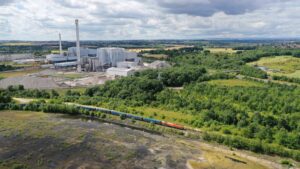In Practice: how the National Infrastructure Assessment will boost the environment
Chris Fry, director of infrastructure & regeneration at engineering consultancy Ramboll, discusses the implications for the environment following the first UK National Infrastructure Assessment.
The recommendations from the first National Infrastructure Assessment crystallise years of work and many good ideas that together form a better approach to infrastructure to deliver a better quality of life and economic outcomes.
Yet it only really marks the end of the beginning – the hard work of implementation is still to come, even once recommendations are adopted by the government. In practice, the implementation will involve aligning many hundreds of organisations with the new agenda, but over time this has a good chance of success in an industry that is hungry for change. The NIC’s ambitions will also be given a helping hand by a range of ongoing collaborative initiatives, notably on digitalisation, innovation and new contracting and business models.
Joined-up thinking is a welcome theme in the assessment and its recommendations. The interdependencies between the energy, digital communication and mobility of the future are recognised at a macro scale, as is the necessity to integrated infrastructure planning with housing at the urban scale. Advocating joined-up land use and transport planning might be seen as something of an old chestnut, but the recommendation to formalise devolved city infrastructure budgets on a five-year cycle is not unhelpful in that regard.
More significantly there are other specific recommendations that take the joined up thinking further, to ultimately help to deliver more liveable and sustainable towns and cities.
Firstly, in terms of blue-green infrastructure solutions which, alongside spatial planning, property level measures and traditional grey infrastructure, is advocated as a potentially cost-effective solution to improve the UK’s flood resilience via river catchment and coastal plans. Though there is some ambiguity about the long-term goals for the level of flood resilience.
Secondly, with the commitment to conduct more detailed analysis on the role of regulatory and other constraints upon utilities in the timely and cost-effective delivery of local infrastructure for new housing.
The old adage that you cannot manage what you don’t measure is certainly recognised in the assessment too. The document references the Institute for Government’s 2017 review of infrastructure decision-making, highlighting the narrow thinking of the past whereby “the assessment of how well infrastructure is doing too often focuses on the amount of money being spent”.
A new performance measurement framework is instead advocated – a balanced scorecard for the UK’s infrastructure system. This picks up the characteristics of our infrastructure assets as having a long lifetime and operating as an interconnected system, with the natural and built environment also featuring in the guise of environmental net gain and design quality.
The whole set of performance measures addresses a broad range of factors including some big-picture issues such as the resilience to large shocks, natural capital and system efficiency. Equally, day to day outcomes are included such as everyday resilience, service quality, quality of user experience, cost, emissions and environmental externalities. This holistic approach is intended to work across most types of infrastructure which will allow the commission to benchmark across different infrastructure systems.
Big sustainability shifts are embedded throughout the document. It provides recommendations for improved plastic recycling and a wide range of measures to help to deliver an energy transition and significant carbon savings with energy efficiency for buildings, electric (and autonomous) vehicles and a shift to more renewable generation sources.
Overall, there is a clear recognition that progress within the UK’s infrastructure must not be at the cost of nature and that nature will provide benefits and financial gains when seen as part of the overall system.
This reflects the growing recognition of ecosystem services and natural capital in analysis, and in time decision-making, by the public and private sector alike. For example, a 2015 assessment of London’s street trees by the London i-Tree Eco Project found their worth per annum equivalent to £126m in pollution removal, £2.8m in stormwater alleviation and £261,000 in building energy savings.
Natural capital is likely to be a fundamental mechanism to help to secure the sustainability pathway for the UK infrastructure system and the National Infrastructure Commission is working closely with the government’s Natural Capital Committee.
Though at this stage the performance measures required to underpin this are acknowledged to be a work in progress. These measures will need to evolve and be improved over time but in the short-term we await with interest an annex to the assessment that will set out more detail on the approach.

Chris Fry, director of infrastructure and regeneration, Ramboll.















